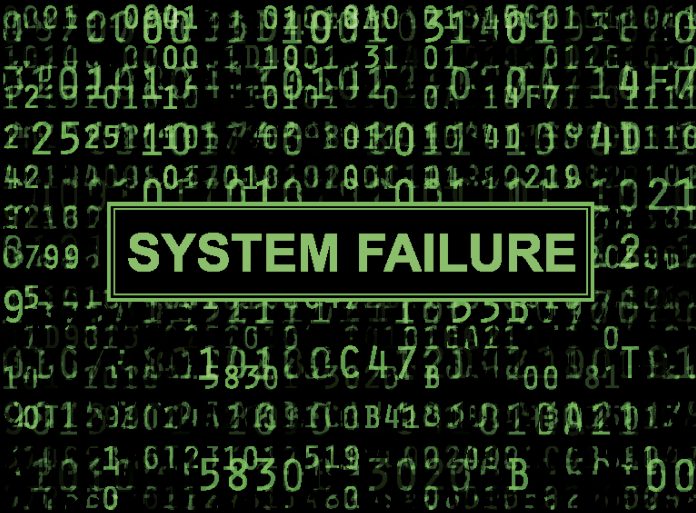Jim Berrisford, COO of Step5, explains why he believes that government projects are often too long, too slow, too inflexible and calls for a new agile approach
“Optimism bias and failure to set clear objectives”. That, according to a damning report from the National Audit Office, is to blame for the abysmal performance of the government’s flagship identity verification platform. Sadly, Verify is not alone – it is the latest in a long line of government transformation projects that have failed for reasons including poor strategy, slow speed to market, failure to exploit the latest technological innovation and, consequently, low adoption rates.
In today’s fast-paced world, it is hardly surprising that by the time a project conceived in 2011 nears completion, the requirements and technology have changed. However, unless the government recalibrates its approach to major projects, we are doomed to more of the same.
Change, change and more change
The world is changing like never before. While government continues to focus its efforts on the IT stalwarts such as ERP and CRM, a whole new breed of technical innovation is emerging and transforming how we do business. Take augmented reality and artificial intelligence, for example.
In the past five years alone, the use of BOTS, ChatBOTS and robotics has expanded exponentially, automating repetitive tasks, reimagining customer service and technical support, freeing up the workforce to focus on more strategic priorities. Even the way we interact with systems is changing; visual and voice search have risen sharply in the last two years, with Gartner predicting that by 2020, they will account for 30% of all searches. This rate of change is unprecedented and it is easy to see how a project planned 10 years, even 5 years previously, could not even have imagined their acceptance in the mainstream.
Certainty versus flexibility
There is clearly a disconnect between the world we live in today and the way government transformation projects are set up. One is ever-changing; The other is standing still. Part of the problem is that the funding cycle and governance for government IT projects dictate certainty from a business case, plan and scope, which is neither surprising nor unreasonable. Value for money has been top of the political agenda for the last decade – nailing down in advance what is going to happen, when and for how much is crucial.
But how can there be certainty in a world where a constant stream of new technologies and capabilities is the norm? Market competition, customer expectation, not to mention an unpredictable political environment that governs the rules, demand that business changes and adapts at a faster rate than ever before – but old ways of doing things persist.
When it comes to digital transformation, too much certainty or, rather, not enough flexibility, is a bad thing. It can mean that the project fails to keep pace with the changing needs of the business, or that the business fails to exploit the latest technical innovation to meet the evolving expectations of the customer or user base. That is where many government projects today are going wrong.
The way government departments, and indeed many large organisations, currently work with their suppliers compounds the problem. The focus is on meeting pre-agreed deliverables – that is what success is judged on – with little flexibility to respond in partnership to change, whether in client requirements or in available technologies.
Agile digital transformation
So, what is the answer? “Agile” is often proffered to resolve the issue. Agile aims to deliver business capability and value quickly, either as a reaction to market forces or proactively adopting a trial and error method to opening opportunity or improving customer service and the customer experience. It is undoubtedly part of the answer, but it often fails to consider the other links in the delivery chain within the organisation that need to adopt an agile mentality. It is all very well delivering agile change, but it needs to be rolled out across the business in an equally agile way so that staff and customers can see and experience the benefits for themselves, and provide important feedback to help shape the next stages of the transformation.
Done in the right way, agile breaks down large transformation programmes, only committing financial support to smaller, self-justifiable phases, each with their own clear business benefit, to deliver function quickly in a 3 to 6-month window.
Agile digital transformation projects need to be able to change direction at speed while maintaining focus on the desired longer-term business outcomes. And of course, they also need to allow for the fact that market disruption itself may require the business to change its longer-term strategies and direction just as quickly. This was clearly the case for Verify, where what was intended in 2011 was not what was required by 2018. That is why it is so important for the governance structure to allow the strategy to be reviewed and redirected quickly if required.
Gartner describes this process as ContinuousNext, actually challenging the concept of a project and suggesting that delivery is a constant cycle of delivering, reviewing and changing if an organisation is going to stay relevant, efficient and business-fit.
Agile approach, agile mentality
Speaking at the Government’s first project delivery conference earlier this year, Matthew Vickerstaff, interim Chief Executive of the Infrastructure and Projects Authority, outlined the dangers of standing still and stressed how we “need to improve the project system for the long term, and react and stay ahead of our changing environment.” The use of agile methodologies and a ContinuousNext improvement cycle represents a step-change in how projects are conceived, managed, contracted, delivered and governed, fit for the world we live in today.
Breaking down business change into more manageable increments for users, enabling exploitation of the latest technological developments, increases the chances of digital transformation success and secures the organisation against financial exposure and business risk.
Admittedly, implementation can be challenging, particularly when a project has a high political profile. It means a dramatic departure from projects of the past, with their single end goal and focus on big bang success, and a new mentality of continuous change, where small steps and successes are the route to larger gains.











